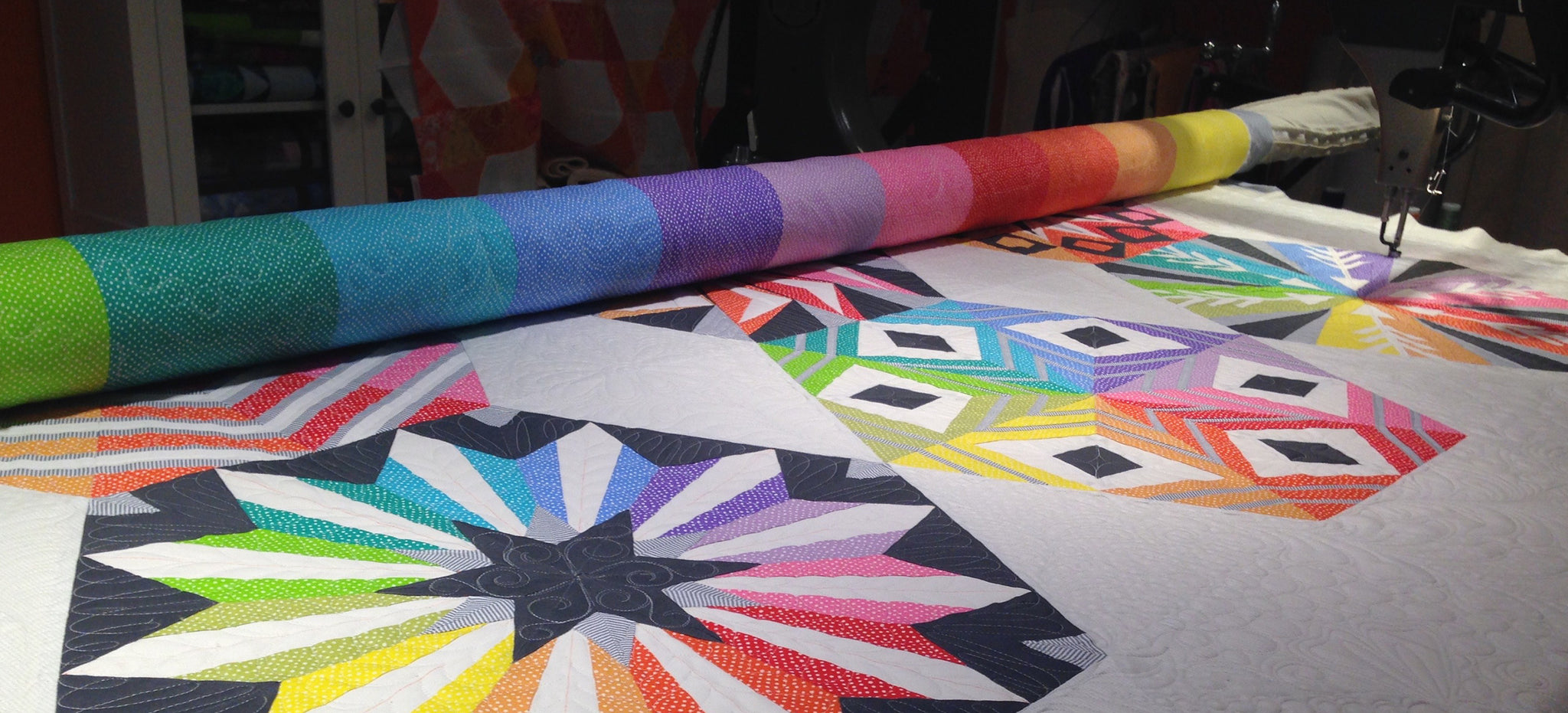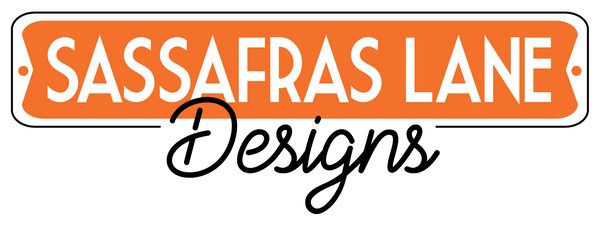
Sewology Sunday - Tips from a Longarm Quilter

Happy Mother's Day to all the moms of two and four legged kids out there! We have a special post from my lovely, amazing and talented mother, also known as our in-house longarm quilter! She has written some great tips for those of you who are taking or thinking about taking your quilts to be quilted by a professional longarm quilter.
Tips From a Long Arm Quilter
Here are some thoughts to help you have a positive experience when you have something quilted by a professional longarm quilter.
When you pick a quilter, ask questions, get recommendations from your local quilt store, look at their work. Every quilter has their own unique style - will that type of quilting look good on your quilt?
If you have definite ideas of how you want your quilt quilted, be sure to articulate those ideas!
Quilt Top
- Be sure to iron your top and back thoroughly. The most common problem area I see is correct ironing as the quilt is being pieced. Remember if a tuck is sewn in, it can’t be quilted out.
- Clip all loose threads. My tip of the decade is – “Sew with thread that matches the lightest fabric color in your quilt” ie: if you have white in your quilt – sew with white thread! Some fabrics ravel more than others, be sure to trim all the little ravels if they will shadow through a lighter colored fabric.
- Straight borders cut from the length of grain (parallel to the selvages) have less stretch and lie much flatter than those cut across the grain. Correct piecing of borders is important to ensure a square quilt. (see our border post soon)
Quilt Back
- For long arm quilting your quilt back needs to be a minimum of 8 “ larger than your quilt top. (4” on all 4 sides)
- If you washed the fabrics in the quilt top, then wash the back fabric too. Consistency is key!
- Cut along the fabric grain to avoid sagginess (ripping is a great option for large pieces of fabric –it will always be on grain that way)
- Sew with a ½” seam – iron seam open to eliminate bulk.
- Cut off selvages in your seam – they are woven tighter and shrink differently than the rest of the fabric.
- Square up the quilt backing fabric – no jagged edges. A square quilt back helps insure a square quilt.
- If using a wide back (which are awesome) be sure you open it up and square it (they are rarely cut straight off the bolt unless they are ripped) and they always need ironing (spray starch helps release the creases).
Batting
Most long arm quilters have batting on the roll for a reasonable price that they are comfortable with and have confidence in. Packaged battings are usually very smooshed and need to be opened up so the creases ease out. Air tumbling it in the dryer with a damp towel is a great way to eliminate creases and puff it back up.
Other Random Tidbits
- Do not baste your quilt top, batting and back.
- Please remove all the pet hair from your quilt. If you don't there will be hair embedded into your quilt. Plus, your quilter could be allergic.
- Let your longarm quilter provide the thread. They know what works well with their machine and have lots of options.
Thank you for stopping by! Be sure to call your mom today and tell her you love her.



Comments
Sandi Griepenstroh said:
As a longarm quilter myself, I appreciate so much that you are working to educate possible customers on the best way to prepare their quilts for quilting! Thanks! renaissancesandi.blogspot.com
Barbara said:
As a longarmer and quilter, I prefer that the seams in the back are pressed to one side. There is greater strength this way and if the seam should pop, the quilt batting will not be exposed. If you must press the seam open, please decrease your stitch length to prevent any possibility of batting migration.
Bev Houglum said:
I am a long arm quilter myself. I would recommend always washing the extra-wide backing. One customer’s extra-wide shrunk 5 inches in the width from 108 to 103 inches.
Darby said:
This is great info. I am not a longarmer but I appreciate these tips for helping my longarmer achieve best possible results for my quilts. Thank you.